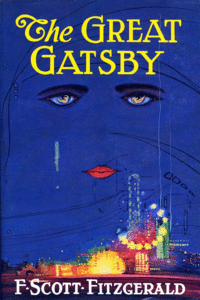Just about every venerated American institution takes it on the kisser in
His Girl Friday (1940). Nothing is sacred—politics, marriage, motherhood, sentiment, patriotism, and the values of the Fourth Estate all get deveined and dunked in butter like shrimp. The prodigious Howard Hawks directs for breathless laughs; he and his actors (Cary Grant, Rosalind Russell, Clarence Kolb, Porter Hall, Ernest Truex, Roscoe Karns, Frank Jenks, and Regis Toomey) generate a mind-blowing tempo in the dialogue. This fast-talking high point of screen newspaper comedies raises the American movie vernacular to a Benzedrine-fueled art.
His Girl Friday is the Menckenesque city of salty reporters, toadying careerists, gangsters, politicos, and simpletons—a modern commedia dell'arte with its character types. It shares with the Renaissance tradition an emphasis on character acting and an exuberance that reminds one of improvisatory theater. The reporters work for various dailies and travel in packs, which is weird considering they're all out to scoop the others. These guys have no patience for pretense or tender emotions, and they cut through the bull. Grant and Russell—a controlling editor and his independent-minded reporter—parry and thrust, and their erotic verbal jabs are a classic American mating. They were the screwball genre's best pairing since Fredric March and Carole Lombard in
Nothing Sacred (1937), another skewering newspaper comedy (accented by Walter Connolly's conniption fits).
His Girl Friday is both knockabout farce and sharp, modern satire, and speeds along from start to finish on a solid track of one-liners, squib, and broadside. Thanks to the overlapping dialogue (a technique used before in movies), jokes whiz by you so fast that if you stall on any one to replay it mentally, you're liable to miss the next two or three.
In the 1930s, Hollywood comedies were at their toughest and most satirical. They were designed to get Depression-era America out of its funk, and these tart, springy romances, newspaper farces, and review-style musicals were huge successes. An intermingling group of 1920s newspaper columnists, critics, and playwrights on the East Coast gave American talkies much of their whiplash energy and smarts. In one of the great migration stories in the history of popular art, many of these wags wound up in Hollywood—year-round sunshine and easy money. The screenplays they wrote are filled with smart, sardonic dialogue—crude, quintessentially American poetry. Ben Hecht and Charles MacArthur wrote
The Front Page (the 1928 Broadway hit from which
His Girl Friday was adapted) and Hecht wrote
Nothing Sacred, Charles Lederer wrote the screenplay for the first movie adaptation of
The Front Page in 1931 as well as the screenplay for
His Girl Friday, Jules Furthman wrote the pre-Code Jean Harlow newspaper comedy
Bombshell (1933) and two or three enormously entertaining Howard Hawks classics (1939's
Only Angels Have Wings,
To Have and Have Not in 1944, and
The Big Sleep in 1946), Herman Mankiewicz co-wrote
Citizen Kane (1941) and adapted the George S. Kaufman and Edna Ferber play
Dinner at Eight for the screen in 1933, Nunnally Johnson wrote the riotous comedy
Roxie Hart (1942) starring Ginger Rogers and Adolphe Menjou (who played the editor in
The Front Page in 1931), Robert Benchley returned to Hollywood during the worst of the Depression to write features and star in several popular shorts, and Donald Ogden Stewart wrote
The Philadelphia Story (1940).
 |
| News ink. Cary Grant and Rosalind Russell |
By the middle of the 1940s, the era of carefree screwball stories about newsmen, wisecracking society dames, and daffy heiresses was largely played out, and
His Girl Friday was thus not only the greatest but also one of the last of its kind. American audiences turned their attention to events in Europe, and found there wasn't much left to laugh at. Movies got propagandistic and returned to serious, "noble" homefront themes, as in
Mrs. Miniver (1942),
Since You Went Away (1944), and
The White Cliffs of Dover (1944). The war sapped comedic energies and soured the public on its old urge to satirize its sacred cows.
















